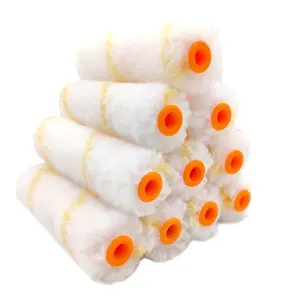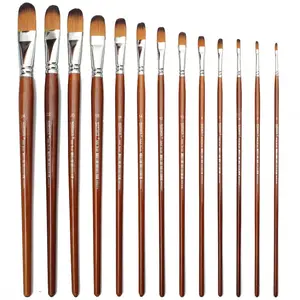Discover the Versatility of Bent Paint Brushes
Embarking on a painting project requires the right tools, and among the essentials is the bent paint brush. This unique tool stands out in the painter's kit, designed to tackle challenging angles and hard-to-reach areas with ease. Whether you're a professional decorator or a DIY enthusiast, understanding the various types of bent handle paint brushes is crucial for achieving a flawless finish.
Types and Applications of Bent Brushes
Bent brushes come in an array of sizes and shapes, catering to a diverse range of applications. The bent radiator paint brush, for instance, is tailored for painting behind radiators and other tight spaces. Its angled handle and tapered bristles ensure precision, making it an indispensable tool for intricate work. Similarly, bent brushes are also favored in fine art, where detail and accuracy are paramount.
Features and Materials
The construction of a bent paint brush is a testament to its functionality. Typically, these brushes feature an ergonomic bent handle that allows for a comfortable grip, reducing hand fatigue during prolonged use. The bristles may be synthetic or natural, each offering distinct benefits. Synthetic bristles are durable and suitable for water-based paints, while natural bristles excel with oil-based mediums, providing a smooth application.
Advantages of Using Bent Brushes
One of the primary advantages of using a bent handle paint brush is its ability to access awkward spaces without compromising on the quality of the paint job. This makes them particularly useful for both professional painters and hobbyists who demand precision. Additionally, the design of these brushes can lead to a more efficient painting process, as they minimize the need for additional tools and touch-ups.
Choosing the Right Bent Brush
Selecting the right bent paint brush depends on the specific requirements of your project. Consider the size and shape of the area you will be painting, as well as the type of paint you will be using. For water-based paints, a synthetic bent radiator paint brush might be the best choice, while a natural bristle brush could be more suitable for oil-based paints. Regardless of your choice, ensuring that the brush meets your project's needs is paramount.
Maintaining Your Bent Brushes
Maintenance is key to extending the life of your bent paint brushes. Proper cleaning after each use will prevent bristle damage and maintain the brush's shape. For water-based paints, washing with soap and water is typically sufficient, whereas oil-based paints may require a solvent for cleaning. Storing your brushes properly after cleaning will also help in retaining their form and function for future use.













































 浙公网安备 33010002000092号
浙公网安备 33010002000092号 浙B2-20120091-4
浙B2-20120091-4